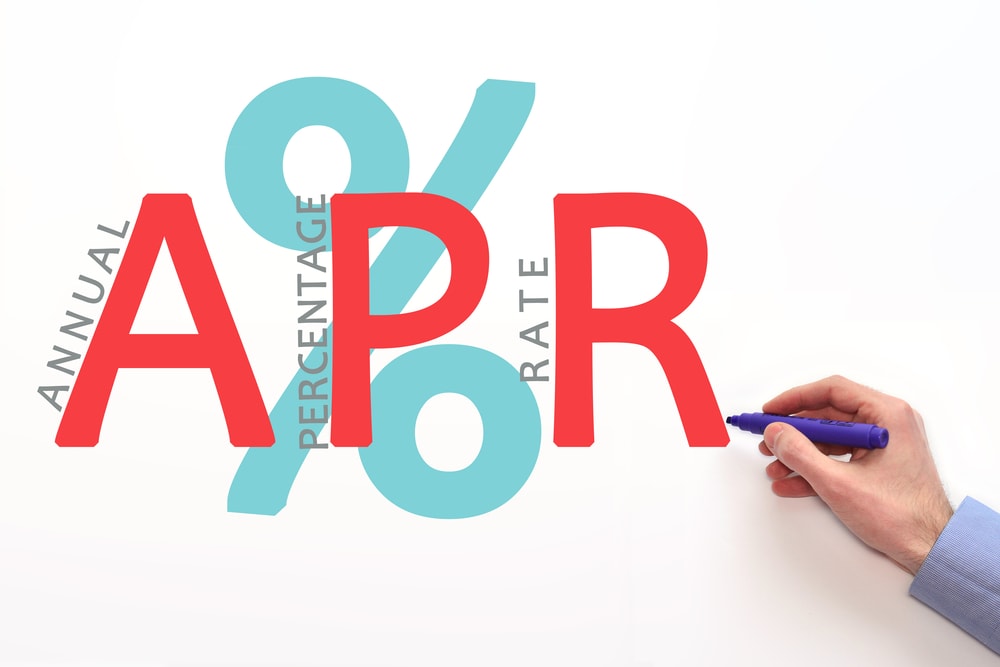While availing of any financial product, borrowers usually look for lenders offering lower interest rates. However, this process is not appropriate and can crush one’s finances in the long run. Evaluating just the interest component often fails to show the overall borrowing cost.
Therefore, potential borrowers should consider the APR or annual percentage rate to resolve this issue, helping them compute the exact borrowing cost. Let’s understand what APR is and how to calculate APR.
An Overview of APR
In terms of unsecured financial credits like personal loans, new borrowers usually seek cost-effective loans with affordable processing fees, reasonable annual interest rates, etc. However, they must know how to calculate APR beforehand. Besides, individuals must know the exact meaning of APR to ensure optimal borrowing.
The annual percentage rate or APR defines the overall borrowing cost of a loan by considering the annual interest rate and other associated charges, such as processing fees, insurance cost, administrative fees, etc. It is usually represented in percentage and shows the annual cost of a loan.
It is an effective financial tool enabling borrowers to compare different loan terms and choose the appropriate lender per their financial requirements. The annual percentage rate provides a comprehensive figure of the yearly cost of a loan.
Before knowing how to calculate APR, individuals must note that APR is segmented into two parts – personal and representative. Here, personal APR is defined as the annual interest rate levied by the lender depending on the borrower’s eligibility and financial standing.
On the other hand, representative APR defines the exhibited interest rate against a loan. However, borrowers must note that personal APR is often higher than representative APR, which states that an interest rate is levied based on financial credentials. Therefore, before applying for an unsecured advance like a personal loan, one must thoroughly understand APR and know its calculation to avoid financial burden.
How to calculate the annual percentage rate (APR)?
Knowing how to calculate the APR is crucial as lenders often persuade borrowers with a lower annual interest rate (AIR) but impose substantial additional charges. For this reason, one must know the calculation of APR to be aware of the exact interest outgo. Along with this, it is crucial for borrowers to know everything about the charges and fees applicable to their personal loans.
Now, to help you with that, check out the APR formula along with the calculation to estimate the annual percentage rate:
APR= [{(Fees + Interest) / Principal} / n] * 365*100
Here, “n” represents loan tenor in terms of days.
Let’s understand the calculation with a simple example:
For instance– Ravi is applying for a personal loan of Rs. 5 lakh with a repayment tenor of three years. The interest rate levied against the loan is 12%, the processing fee is 1.5%, and the insurance cost is Rs. 4,700.
The overall calculation of APR is-
The overall processing fee after calculation is Rs. 7,500, total fee including insurance cost is Rs. 12,200 and the interest cost is Rs. 1,80,000. Now, as per the mathematical formula of APR-
APR = [{(12, 200 + 1, 80, 000) / 5, 00, 000} / 1095] * 365* 100
= 12.81%
The overall cost of the loan is estimated at 12.81% for three years and is greater than the nominal interest rate.
However, borrowers must note that APR does not consider compounding interest and is not functional with floating interest rates. Calculating APR before borrowing will allow borrowers to avail better interest rates for their personal loan or any other credit.
Therefore, before knowing how to apply for a personal loan, individuals must comprehend the difference between AIR and APR, consequently allowing borrowers to have a hassle-free borrowing experience.
While surfing the internet for affordable loan offerings in the market, borrowers can look for the best personal loans offer extended by Bajaj Finserv. It comes with a reasonable APR and features some additional benefits.
Here, borrowers can enjoy pre-approved offers extended by these leading NBFCs that ensure easy loan processing and minimal documentation. These offers are available on a wide range of financing options, such as personal loans, credit cards, business loans, etc. Individuals can check their pre-approved offers online by mentioning their essential credentials.
Therefore, before opting for any credit facility, knowing how to calculate APR will provide borrowers with a clear idea of the overall borrowing cost and assist them in making an informed decision.



